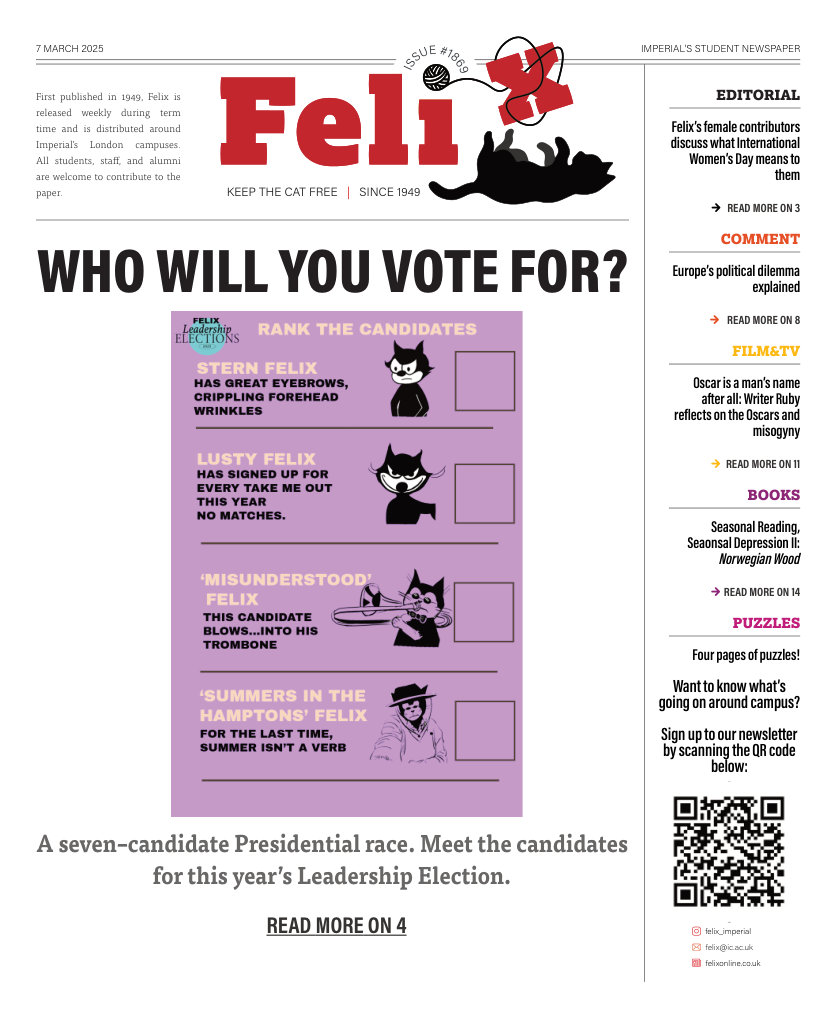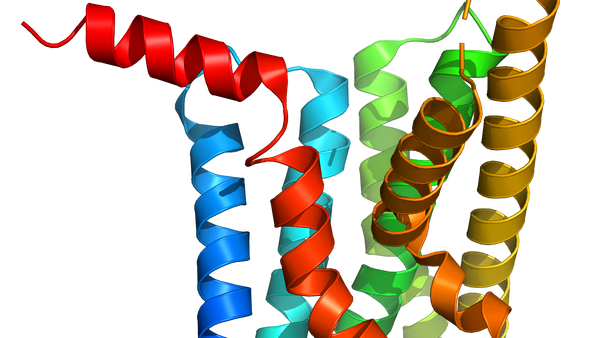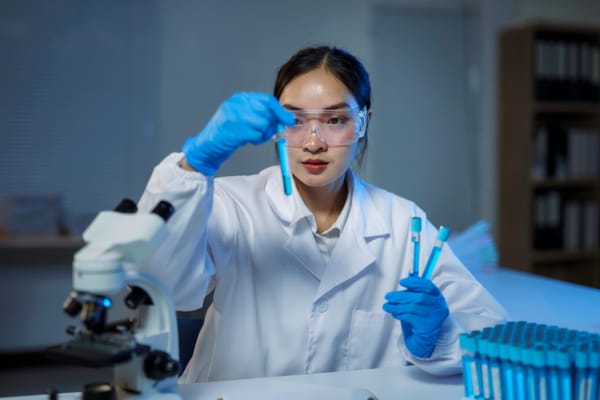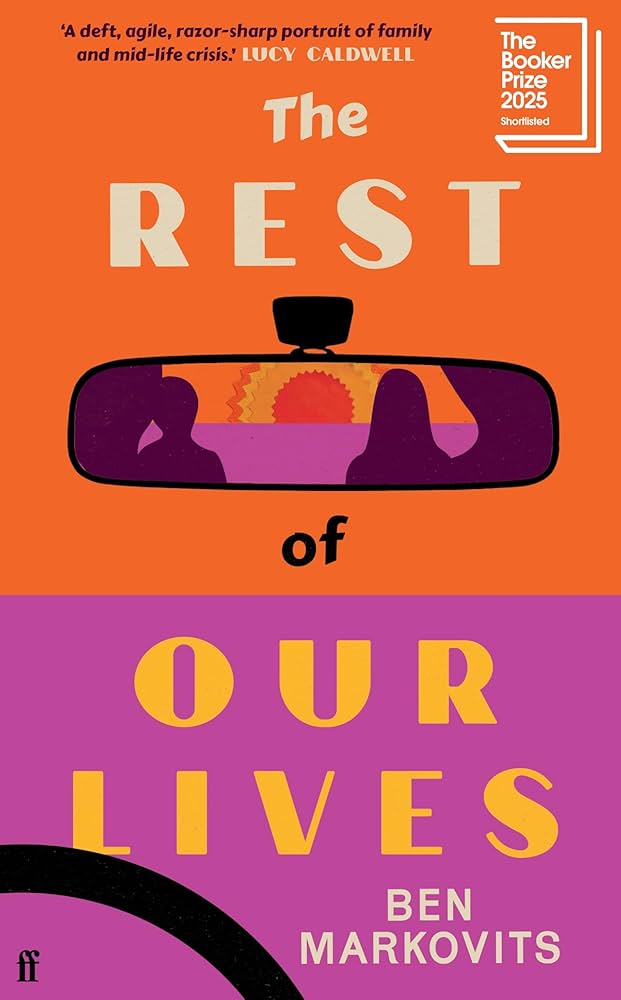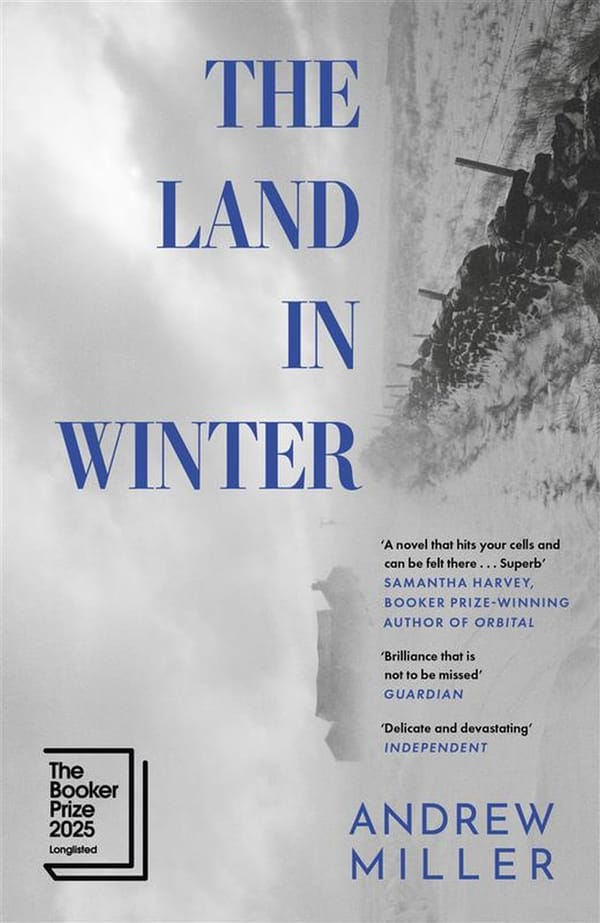The state of the European healthcare industry
Felix sat down with Imperial graduate and life sciences consultant Sayak Bhattacharya to discuss the state of the pharmaceutical industry.
The healthcare sector is one of the largest employers of Imperial’s Chemistry and Life Sciences graduates. Sayak Bhattacharya graduated in 2023 with a BSc in Chemistry and today works for Trinity Life Sciences, one of the largest life sciences consulting firms in Europe. In this interview, Sayak and I discussed the increasingly uncertain healthcare landscape across Europe and the UK as the first quarter draws to a close.

What is consulting?
Felix: Some may not have heard of the profession before, could you explain life sciences consulting to me?
Sayak: Life sciences consulting is like all consulting; it is a thought partnership between pharma companies and us. These pharma companies can be big or small, you know, from the big ones like Pfizer, GSK or Merck to small startups or mid-size companies like Ionis. Fundamentally we help them with strategic decisions.
Now, what are these strategic decisions, you may ask? They range from companies trying to decide what to do with an early-stage asset – such as a new drug coming through their pipeline that is really promising for a certain disease. It takes a lot of money to develop a drug. Companies need to make these big decisions, and consultants, usually with their expertise, come in as a second pair of eyes.
Felix: Can you give me an example of the work as a Consultant at Trinity?
Sayak: There’s a wide variety of project types offered across Trinity with their different divisions. In my division, Evidence, Value, Access and Pricing, we do a lot of the pricing and access work. This means going to insurers and governments to see what price and access can be achieved given a specific drug’s trial data. Then we provide forecasting of revenue and strategic recommendations.
Another example would be due diligence projects with companies looking to make acquisitions, as well as value communication work, which is almost like science marketing. We go to insurers and governments to see what price can be achieved for a drug, and seek to learn what pushes their buttons so clients can market their product in the best possible way.
In reality, the work we carry out varies enormously depending on client needs, department and the state of the market, so while I have provided some examples this barely scratches the surface of the type of work in this sector.
Upcoming Therapies
Felix: What pipeline therapy are you most excited about?
Sayak: I think the beauty of Pharma is that there are always interesting drugs in the pipeline either with new mechanisms of action, precision medicine approaches, or new biomarkers for example. There’s always something or the other that science is innovating, and I get to work with a lot of them. I would personally pick cancer vaccines as my current favourite. They are based on the same mRNA technology that was used in the Pfizer COVID-19 vaccine that we got a few years ago, and it has the potential for long-term control of several cancers which hasn’t been achieved before.
How does this work though? Like traditional vaccines, these aim to harness the immune system teaching it to identify specific markers known as antigens on cancer cells, usually taken from a biopsy. The therapy aims to integrate seamlessly with traditional surgical methods as the removed tumour mass, can be used alongside mRNA technology to create a vaccine that trains the body to recognise a patient’s specific cancer cells. All this put together gives you a vaccine specifically tailored to you and your cancer type. I believe it genuinely has the potential to make some very serious cancers much more treatable through simply leveraging our own body’s immune system, which is incredibly powerful, incredibly powerful.
The Joint Clinical Assessment
Felix: What do you think is the most impactful ongoing change in the pharmaceutical space right now?
Sayak: The most interesting thing, I would say, depends on what you want me to focus on. Keeping it science- communication and business-themed, and not too heavy on finance. I think an interesting thing going on in the pharma industry, or at least in Europe right now, is a legal change to the European Medicines Agency unifying the drug assessments of all European countries through a ‘Joint Clinical Assessment (JCA)’, which is a framework that will be used to recommend whether a drug should be covered across the EU – a major shift from before when each country had complete autonomy over these decisions. And it’s coming in soon; it’s rolling out this year. There’s actually been a lot of discussion and controversy around it.
Felix: Interesting, why is it so impactful and what makes it controversial?
Sayak: First of all, I would look at it from a holistic EU perspective. Some countries have robust healthcare systems and strong healthcare bodies like the UK with NICE or Germany with the G-BA. These authorities have good judgment and conduct rigorous clinical evaluations of drugs, and are very strong systems. However, other EU countries don’t necessarily enjoy the same luxuries – this is who the JCA aims to assist. In this sense, it is a crackdown on under-expenditure across the EU, referring to the total expenditure of healthcare bodies, which has been steadily declining due to widespread governmental budget cuts.
The caveat is that the JCA could significantly heighten the barrier to entry into the EU market for new therapeutics, which many think is not necessary, arguing that a lot of drugs – particularly from less well-funded studies – may not be able to afford this extra regulatory hurdle, therefore potentially leaving less ‘profitable’ disease areas in an even worse position.
Felix: Do you think this is a valid argument considering all sides?
Sayak: It’s important to remember a key distinction: at its essence, this is a recommendation. It is not that each country must follow it; they have their own autonomy to make decisions, and most of the data will be submitted to them anyway. It’s just an extra hurdle they need to pass.
It can also do good things for pharma. For example, because of the JCA, access to drugs could be much faster, as countries don’t need to conduct as many individual anaylses. And then, again, it could also prevent the payer from being ripped off a little bit. Sure, they might lose access to some therapies, but there is now more universal quality control on the kind and quality of data a clinical trial needs to gather.
The caveat is that the JCA could significantly heighten the barrier to entry into the EU market for therapeutics
Here’s the thing though: the payers aren’t the patients – the payers are healthcare bodies. They’re the ones buying the drugs. The government is the one who holds all the power. If they decide your drug’s data isn’t enticing, that’s it – they won’t onboard your product, irrespective of clinical trial results. So there is already a lot of incentive not to exploit the clinical trial systems in underfunded countries.
Overall, the joint clinical assessment does standardise and strengthen clinical data, which is great; maybe it will streamline data analysis and drug rollout across the EU and introduce better quality control as is intended. But it very well could restrict access to therapeutics in less well-funded disease spaces.
I don’t think the outcome is set in stone either. I believe how governments react to the new system will have massive implications. Whether they embrace the change, and advocate for realistic improvements, I think will be a key deciding factor to the JCA’s overall legacy.
In conclusion it’s a black box – we just don’t know what’s going to happen, how much power it will have or its long-term impact.


